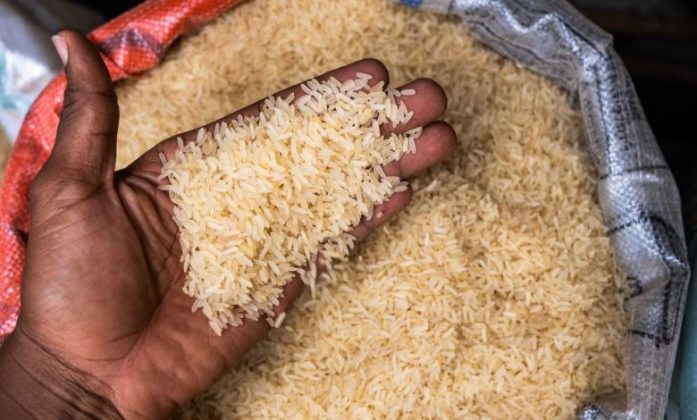Nigeria Faces Alarming Rice Shortage As Prices Surge By Over 37% In 2023

A report from the AFEX Wet Season Crop Production Report for 2023 has unveiled a pressing issue in Nigeria – the exponential rise in rice consumption has far outstripped local production, resulting in an annual shortfall of approximately two million metric tonnes.
Punch reports that this imbalance has led to an eye-watering surge of over 37 per cent in the price of rice within the year.
The report sheds light on the relentless surge in rice consumption, closely mirroring the annual population growth projection of 2.6 per cent, hovering at an alarming two per cent.
“Rice consumption in Nigeria has been steadily increasing, aligning with the consistent growth of the rice market, nearly matching the annual population growth projection of 2.6 per cent at two per cent. This has led to a supply gap of about 2 million metric tonnes annually,” the report noted.
READ ALSO: Why I Hid My Mum’s Identity For Years — Nigerian Singer, Mayorkun
Nigeria has expended a staggering $15 billion over the last decade to fulfil its burgeoning rice consumption needs despite its potential to become a net rice exporter, as highlighted by the report.
Due to various critical factors, rice prices have skyrocketed to their highest levels in nearly 12 years. India’s ban on rice exports and the potentially disruptive effects of El Nino on production in vital regions have significantly contributed to this global price hike.
Moreover, disruptions from rain-induced issues and quality inconsistencies during Vietnam’s summer-autumn harvest have compounded these price fluctuations.
Domestically, the spike in rice prices, surging by over 37 per cent year-to-date, can be traced back to reduced production in 2022, primarily influenced by severe flooding during that year’s wet season.
The report also cites flooding and the consequential impact of global market dynamics as key drivers for escalating rice prices in Nigeria.
Despite these challenges, the report offers a glimmer of hope, forecasting a potential 4 per cent increase in rice production and an estimated up to 32 per cent increment in the price of paddy rice.
Notably, the production of milled paddy rice has witnessed a substantial uptick, surpassing 35 per cent in the country, with an estimated output of 5.4 million metric tonnes in 2022—a marked surge from 3.9 million metric tonnes in 2015.
Although rice cultivation spans all agroecological zones in Nigeria, the Northwest region claims the lion’s share, contributing a substantial 72 per cent of the total rice production in the country.
Experts say this supply-demand imbalance presents a critical challenge for Nigeria, underscoring the urgent need for strategies to bridge the gap between rice consumption and local production to ensure food security and stabilize prices for this staple commodity.






